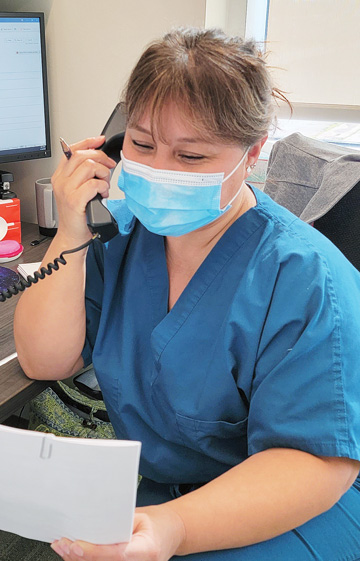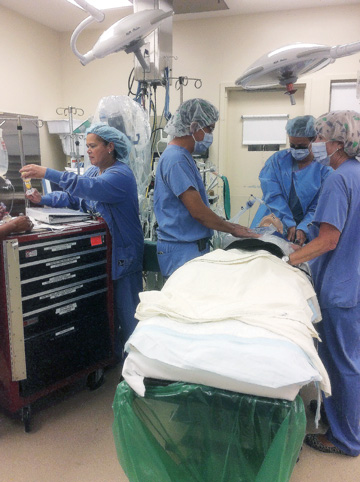Bonnie Weinberg, MSN, RN, CNOR, is a soothsayer of simulation training. “She truly has a gift,” laughs Donna Lagasi, RN, MS, BSN, director of OR services at The Valley Hospital in Ridgewood, N.J. “She’ll think of an emergency response drill to run, and the scenario we practice often happens in real life a couple weeks later.”
Ms. Weinberg’s prophesying helped the hospital earn this year’s OR Excellence Award for Patient Safety. “Simulation training increases outcomes of knowledge, skills and behavior,” says Ms. Weinberg, the hospital’s clinical practice specialist. “Training for high-acuity, low-volume events helps to build a clinical foundation and improve team dynamics — including communication and situational awareness — that leads to optimal outcomes.”
Each simulation she runs involves seven surgical team members — a number that ensures each participant is actively involved in the drill — who enter the session unaware of the emergency they’re about to face. Ms. Weinberg’s uncanny ability to run meaningful drills comes into play here, too. “Bonnie always adds a wrinkle the team isn’t expecting,” says Ms. Lagasi.
Ms. Weinberg laughs — somewhat mischievously, to be honest — in agreement. For example, she recently ran a simulation during which the surgical team had to respond to a patient coding. Ms. Weinberg’s wrinkle: The patient was in the prone position. Responding team members had to think on their feet and quickly retrieve a stretcher, so they could flip the patient over to administer life-saving treatments.
The team debriefed at the end of the training to discuss their performance and identify potential barriers to an efficient and effective response. Ms. Weinberg always follows up on the lessons learned during sim trainings, and implements new emergency response protocols as needed. For example, surgical teams now keep stretchers immediately outside the OR door during cases involving the prone position, so they’re ready to respond in seconds if the patient codes.
.svg?sfvrsn=be606e78_3)


.svg?sfvrsn=56b2f850_5)